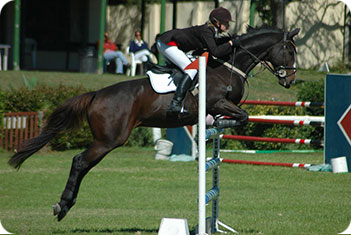Today will be a relatively short post on how to lead horses. This is pretty easy stuff so some of you will probably already know the information here. But if you don't know how, this post will explain everything you need to know!
When around horses, you aren't going to ride them everywhere. You're going to have to lead them from the ground a lot as well. So I put together a list of things you should do when leading a horse.
 |
| This picture shows a horse being led correctly with a lead rope. Pic from http://www.carolynresnickblog.com |
- Stand on the left side of the horse (as shown above in the picture). Originally this was so your right hand was closer to the horse to give you more control, but now everyone leads from this side, even left handed people.
- Don't look at your horse when you lead them. Instead, look where you are going. If you look at your horse it makes them nervous and reluctant to move.
- Lead the horse with your right hand close to the horse's chin, but not too close. Make sure you give your horse some slack in the rope so they are comfortable. Hold further down the lead rope with your left hand to make sure it doesn't drag on the ground.
- Now walk! Your horse should follow you without too much trouble but if they are being stubborn give a small tug with the lead rope to get them to move. Make sure you stay beside the horse and don't walk too much in front of them otherwise they might step on your heels.
 |
| A horse being led correctly with reins. Pic from http://ajilbab.com |
- When leading a horse with a bridle and reins, you lead the same way as you do with a lead rope, except you hold the two reins together in one hand (as shown in the picture above).












